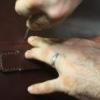Sign in to follow this
Followers
0

Juki 441 clone was missing stitches
By
esantoro, in Leather Sewing Machines

By
esantoro, in Leather Sewing Machines